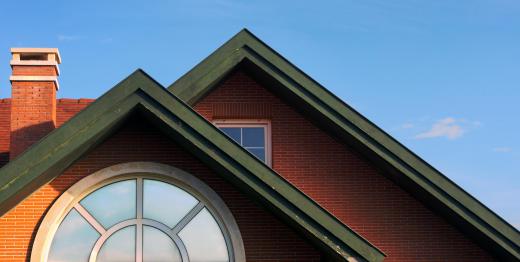A roof beam is generally a length of wood, steel, or aluminum that holds up a roof meant to keep rain, snow, and other elements out of the house. A newer type of beam than the more traditional materials, a composite roof beam can be made from several different materials to make the beam lighter and stronger, and less prone to rotting, warping, or cracking. The type of roof beam used in a structure depends on the size and shape of the roof, and how much weight the roof is required to hold.
Most larger structures such as skyscrapers use steel for their roof beam construction. Steel can hold significant amounts of weight, and it can carry a load across a large area, meaning a roof supported by steel beams can be much wider or longer than other types of roofs. Structures that use steel roof beam construction usually have flat roofs, but some smaller structures may have a peaked roof. Steel is cheaper than wood in most cases, and it can handle a load much better, but steel beams must usually be cut off-site and trucked into a location, whereas wood beams can readily be cut on site.

The wood roof beam has been the material of choice throughout history because wood has been readily available and easy to cut for centuries. Wood has become more expensive as time has passed, and other materials now come with a cheaper price tag. It is, however, prone to warping, rotting, or cracking under load, meaning wood beams will have to be inspected and repaired more often than metal or composite beams.

On extremely small structures, composite beams may be used for roofing. Composite beams are made from more than one material, with one of the most common combinations being wood and plastic. A wood-plastic composite beam will be lightweight and less prone to rotting, warping, or mold build-up, but such beams are not designed to carry a significant amount of load. Wood-plastic composites are more commonly used in trim and non-load-bearing structures, especially outdoors in the yard. They are also commonly used as flooring, as the material is structurally strong enough to bear weight when supported by stronger beam materials beneath.
